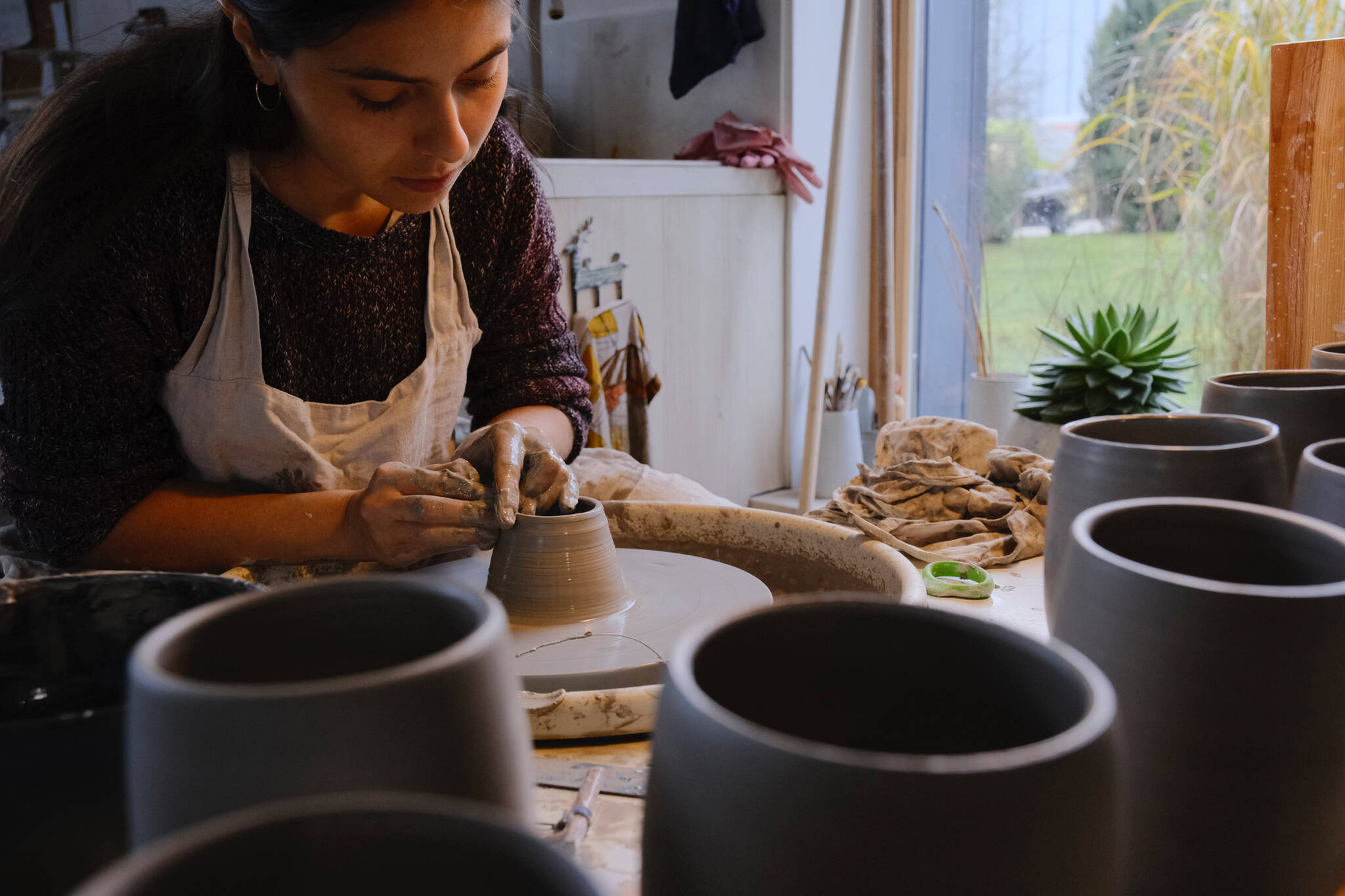A newcomer to Whidbey Island’s premier arts and crafts festival has something unique to offer.
Sasha Polonko, a 26-year-old ceramicist from Oak Harbor, makes her ceramic works of arts from clay and glazes created from raw materials that she forages in the natural world. On Whidbey Island, that has meant digging “wild clay” from waterside bluffs.
Polonko said she is passionate about reconnecting with the art form’s roots as functional ware, whether it’s jars, mugs or pots.
“It connects me to something larger than myself,” Polonko said. “It feels spiritual to me in the sense that it’s something that humans have done for centuries.”
Polonko, who runs the business “Girl Pots,” will join more than 140 other vendors in the 61st annual Coupeville Arts and Crafts Festival, which runs from 10 a.m. to 6 p.m. on Aug. 9 and 10 a.m. to 5 p.m. on Aug. 10.
Coveland, Alexander and Front streets will be lined with vendors. A food court and $5 parking can be found near the Coupeville Library, as well as enhanced children’s activities, including face painting and games as the festival seeks to welcome more young people.
Melinda Erickson, president of the Coupeville Festival Association, said about 10,000 attendees — locals and those from places like Port Townsend, Bellingham, Mount Vernon and Anacortes — are expected over the two-day event.
About 30% of the vendors are new this year, to which Erickson credits the vendor committee’s work spreading rack cards to vendors at other nearby festivals and getting in touch with artists, crafters and makers selling their goods.
“A lot of the vendors just reach out. They’ve heard through the grapevine that this is a fantastic festival to come to and it’s well attended, and we also treat our vendors very well,” Erickson said.
Polonko mainly sells her work on Instagram now, where her functional ware is enjoyed by her nearly 29,000 followers. The chance to connect to communities through participating in markets and festivals is invaluable, however.
Half Costa Rican and half American, Polonko grew up in New Jersey and studied international affairs at George Washington University in Washington, D.C. She waited until graduating to move to a pottery career, encouraged by the safety net her degree provided.
“I was like, you know what? I’m going to pursue pottery and just follow this dream and see where it goes,” she said.
Polonko chased her dream cross-country, traveling to Langley to work under Robbie Lobell at Cook on Clay in 2021, the first of many informal education opportunities all over the world. Apprenticeships with ceramic artists Laima Grigone in Latvia and Kazuya Ishida in Japan followed.
A ravenous appetite to hone her craft won out over the scarcity of such opportunities. “If you’re hungry enough, you can do it,” she asserted.
Observing master potters at work helped Polonko develop her technical skillset and learn to set firing schedules, market and sell her work, host workshops and find respected, inclusive spaces to display her art.
Close quarters also demonstrated how each potter infused their identity into their creations. Polonko is still finding herself as a person and an artist, but described her work as “navigating different extremes,” walking the line between playfulness and elegance.
Personally sourcing raw materials is a part of that identity, an effort to resolve the “disconnect” Polonko feels between ceramics and the Earth. Harvesting clay to throw on her wheel is part of that, as is creating glaze out of flora and fauna she scavenges for herself.
This process ensures her pottery holds the “essence” of each place it is created in. Clay in Tuscany, she noticed during her residency there, is red, in stark contrast to the blinding white porcelain she worked with in Japan. On Whidbey, a “clay haven,” the material is blue-gray and “super pure, ready to throw.”
Polonko finds the tactile ritual of turning clay into pottery can help “get you out of your mind and into your body,” hence her spiritual connection to the medium.
“It feels like something that connects me to humanity — our ancestors — in a way that is used to survive, to express themselves and to create beauty, which I resonate with,” she said.



